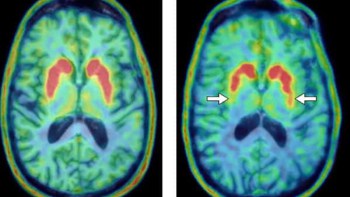Sean Collins, from the UK’s National Physical Laboratory, discusses the goals of PRISMAP, the new European medical radionuclides programme

Nuclear medicine plays a vital role within healthcare, with over 40 million procedures performed each year worldwide. This includes molecular imaging techniques used for diagnostics, as well as targeted therapies that treat diseases such as cancer. All of these procedures rely on medical radionuclides – the radioactive elements used to visualize or irradiate the disease target. But the ongoing progress of nuclear medicine is hindered by limited access to such radionuclides and, in particular, difficulties in introducing new radionuclides into the clinic.

The recent launch of PRISMAP, the European medical radionuclides programme, could change all this. PRISMAP, a consortium of 23 academic and research institutions, aims to create a sustainable source of new, high-purity radionuclides for research and medical applications.
Tami Freeman talks to Sean Collins, higher research scientist at the UK’s National Physical Laboratory (NPL), about PRISMAP and the impact that this new programme could have on nuclear medicine.
How are radionuclides currently used in hospitals?
In nuclear medicine, radioactive substances are introduced into the patient and, depending upon the carrier molecule they are attached to, find their way to specific biological targets in the body. The particular use of a medical radionuclide depends on its physical characteristics, such as its radioactive half-life and the type of radiation it emits.
Some radionuclides, such as 99mTc or 18F, emit gamma rays that can be detected with external detectors to visualize their distribution in the body, as employed in SPECT or PET imaging. Others, such as 223Ra or 177Lu, emit alpha or beta particles that deposit their energy in a localized region (microns to a few millimetres), such as within a cell or a cancer metastasis.
What are the challenges in creating medical radionuclides?
Over 3000 different radionuclides have been synthesized in the laboratory, but only a handful are regularly used for medical procedures and mainly only for imaging. The range of radionuclides is limited by their radioactive decay properties and the ability to produce them in sufficient quantities and at the required purity level to ensure patient safety.
There are two main paths for producing these radionuclides: neutron irradiation in a nuclear research reactor, or alpha or proton irradiation with a particle accelerator. The size and energy of the accelerator determines which radionuclides it can produce. Small, compact machines found in many hospitals create the radionuclides used today. However, higher energy machines are needed to produce novel radionuclides that are currently not available.
And production of these novel radionuclides creates new challenges: the co-production of unwanted radioactivity that may induce adverse effects to a patient, cause waste management difficulties for the hospital or make the medicinal product unfit for use. In particular, the presence of co-products that are isotopes of the same element has been a major stumbling block as they cannot be removed through radiochemistry techniques.
How can PRISMAP help?
PRISMAP aims to produce, develop and disseminate a range of novel medical radionuclides. To achieve this, the collaboration will include nuclear reactors and medium- and high-energy accelerators that will produce these radionuclides, along with radiochemical laboratories and the CERN MEDICIS mass separation facility.

PRISMAP will drive development of new techniques for efficient and effective purification through radiochemistry. But the biggest development will be the introduction of physical mass separation as a standard technique to remove unwanted co-isotopes of the target isotope. This introduction of mass separation will open up a whole new range of radionuclides that were previously unavailable.
What is NPL’s role in the project?
Before any radiopharmaceutical can be used clinically, its administered activity must be determined. This is typically performed using a radionuclide calibrator with traceability to a national metrology institute. Primary activity standards of a radionuclide combined with accurate nuclear decay data measurements underpin its clinical use by providing confidence in the data that researchers are using. NPL will be leading the definition of each radionuclide’s activity in becquerels, to provide that important traceability link for the producers and researchers.
Many of these radionuclides being considered have not been investigated since the 1960s and the underlying nuclear decay data are questionable. NPL will employ its metrology expertise to help determine the fundamental constants of radioactive decay with a high level of accuracy and precision. This will ensure confidence in the nuclear decay data being used across the various fields of research. NPL will also develop radiochemistry techniques to isolate and purify the novel radiopharmaceuticals being produced by PRISMAP.
Why is there a need for new medical radionuclides?
The study of novel radionuclides will lead to additional treatment possibilities and improve outcomes for patients. One example is targeted radionuclide therapy, a growing area of interest for cancer treatment, where there is an ongoing search for new radionuclides that can be used. Some estimates predict that this market will grow to $13.8 bn by 2028.
There is also significant interest in the development of theranostic techniques, where the same targeting vector is used to deliver both diagnostic and therapeutic radionuclides. This will enable personalized treatments via quantitative imaging. PRISMAP is currently investigating a unique terbium quartet – 149Tb, 152Tb, 155Tb, 161Tb – for such theranostic applications. 152Tb and 155Tb can be used for PET and SPECT imaging, respectively, while 149Tb and 161Tb will provide the therapeutic component, with 149Tb emitting alpha particles and 161Tb emitting a relatively high proportion of conversion electrons and Auger electrons.
What other radionuclides will PRISMAP produce?
PRISMAP will focus on novel radionuclides identified as having significant potential for medical applications, but where development is hampered by the difficulty in accessing research-grade materials. Importantly, PRISMAP will be able to offer researchers access to an extensive range of radionuclides from day one of the project.
As well as the terbium quartet, new radionuclides will include 67Cu,169Er and 225Ac. The alpha emitter 225Ac is of particular importance as a growing body of research shows its potential for targeted cancer treatment. This radionuclide is particularly rare, with the purest material coming via the separation of 225Ac from a 229Th generator. But there’s not sufficient pure 229Th worldwide to provide enough material for researchers and it will not be available at a commercial scale. The use of high-energy proton accelerators to produce 225Ac has been shown to be a solution to this problem. Using its network of accelerators across Europe, PRISMAP will aim to give researchers easy access to this exciting radionuclide.
And how will PRISMAP provide this access?
Access to radionuclides during the early biomedical research phases is one of the main obstacles when developing novel radiopharmaceuticals. PRISMAP will enable this development phase by providing access to high-purity radionuclides. We are establishing an access platform on our website that presents production and support capabilities. Any interested party can apply for access to radionuclides and, if necessary, to our complementary network of biomedical facilities that will host external researchers close to the point of production. The first call for proposals will be launched before the end of 2021 for applications in the first quarter.
Ultimately, how will the advances made by PRISMAP help cancer patients?
The European Commission has expressed its commitment to tackle cancer through the Europe’s Beating Cancer Plan and the SAMIRA Action Plan unveiled earlier this year, which includes the establishment of a European Radioisotope Valley Initiative. As well as upscaling the production of novel radionuclides using innovative production technologies and new purification methods, PRISMAP will enable proof-of-concept investigations of new treatments, from test bench to patient care, directly feeding into this European-wide plan.



